Publications
Publications
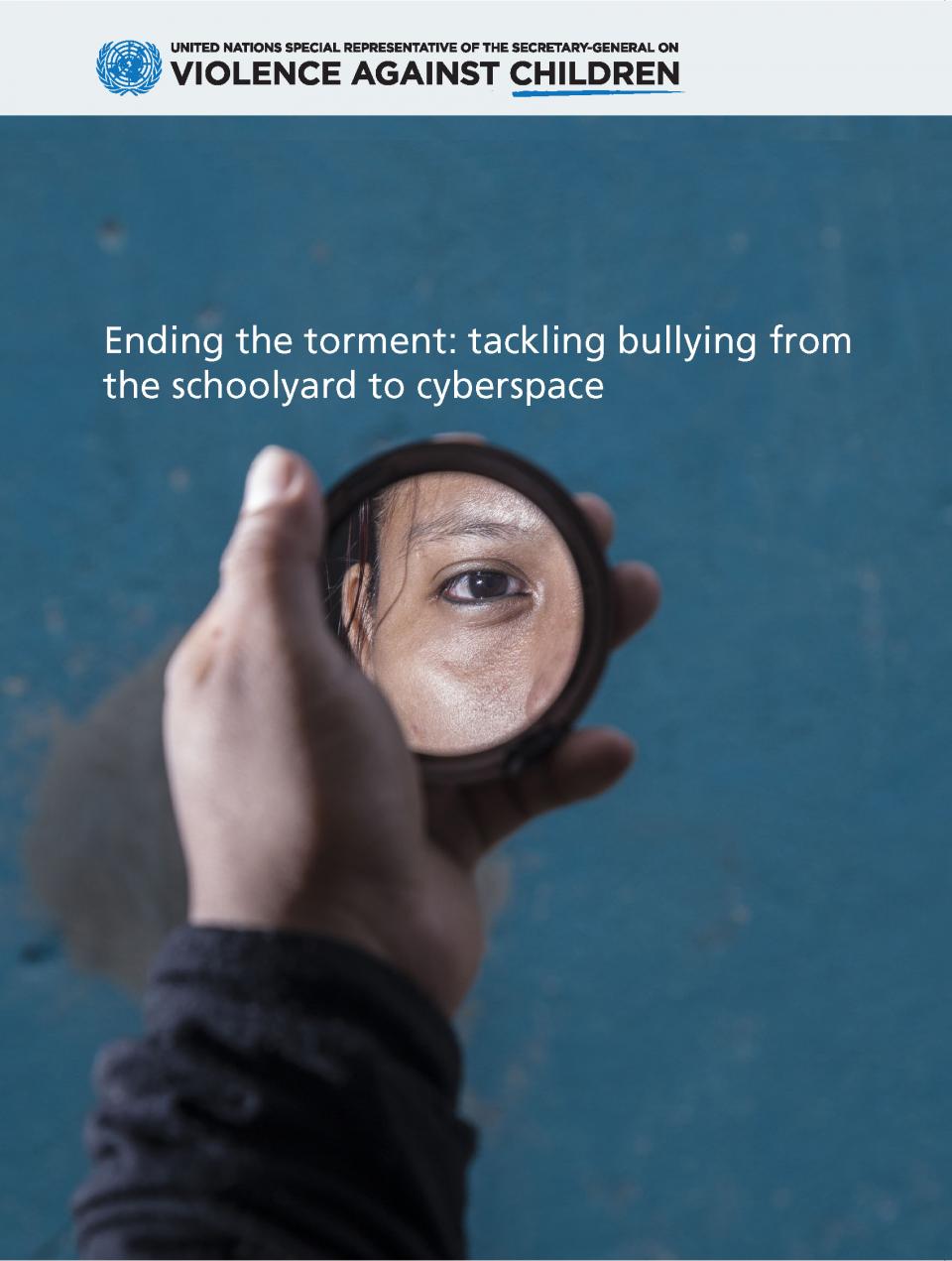 |
Ending the torment: tackling bullying from schoolyard to cyberspaceBullying, including cyberbullying, affects a high percentage of children at different stages of their development, often severely undermining their health, emotional wellbeing and school performance. Victims may suffer sleep disorders, headaches, stomach pain, poor appetite and fatigue as well as feelings of low-self-esteem, anxiety, depression, shame and at times suicidal thoughts; these are psychological and emotional scars that may persist into adult life. Bullying is a key concern for children. It is one of the most frequent reasons why children call a helpline. It gains centre stage in surveys conducted with school children, and generates a special interest when opinion polls are conducted through social media with young people. Download the publication Spanish version French version |
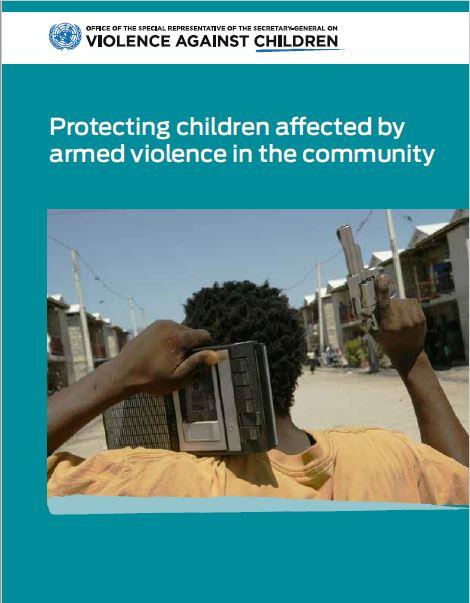 |
Protecting children affected by armed violence in the communityArmed violence in the community compromises children’s rights and is associated with serious risks for their development and safety, causing children to be injured, disabled, traumatized, exploited, orphaned, imprisoned and at times killed. Living in a community affected by armed violence has consequences for children who are targeted as well as those who witness or feel threatened by such an environment. Armed violence disrupts social harmony and family life, interrupts schooling, compromises health care, undermines economic development and generates fear which limits children’s ability to move freely, participate in the life of their community, enjoy childhood and develop as empowered citizens. Download the publication Spanish version |
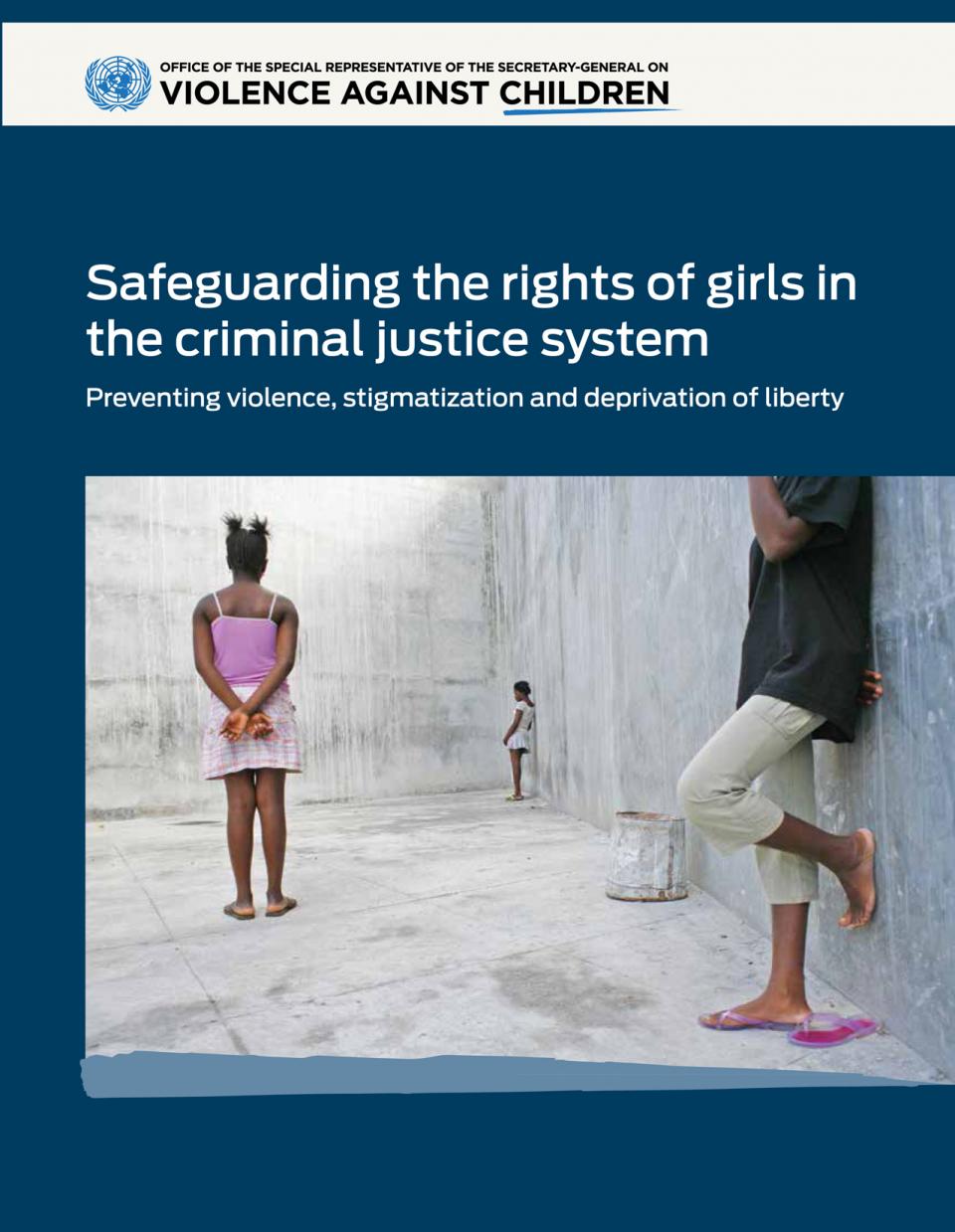 |
Safeguarding the rights of girls in the criminal justice systemGirls often face significant barriers to accessing justice, whether they are victims of crime, witnesses or alleged o"enders. All too often, legislation and criminal, administrative and civil proceedings are inadequate for the safeguarding of their rights, while appropriate policies for heir protection are absent or poorly implemented. In short, as a consequence of their age and gender, girls face a double challenge when they come in contact with criminal justice systems, a challenge rooted in discriminatory attitudes and perceptions that persist in societies around the world. Download the publication |
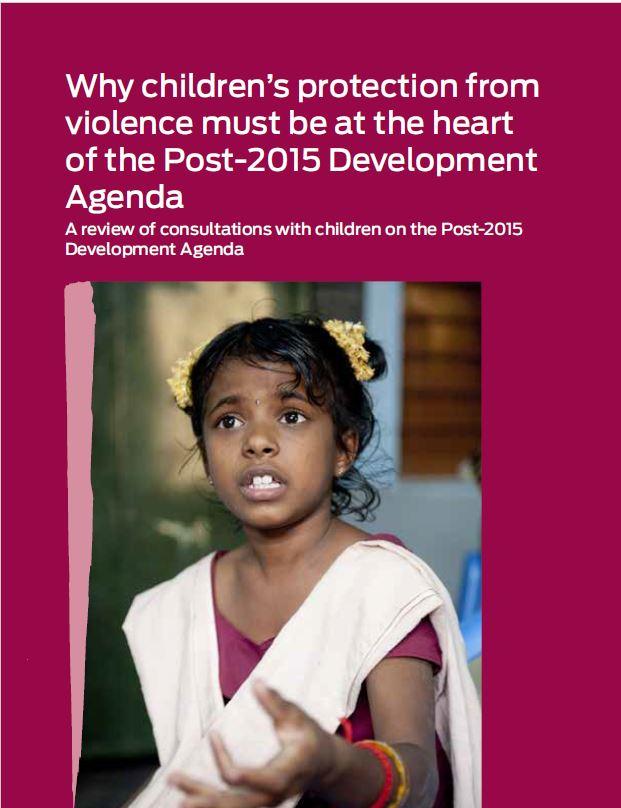 |
Why Children’s Protection from Violence should be at the Heart of the Post-2015 Development Agenda - A Review of Consultations on the Post-2015 Development AgendaIn 2014 the world celebrated the 25th Anniversary of the Convention of the Rights of the Child. As United Nations Member States intensify their efforts to agree on the next generation development framework, we have a golden opportunity to tackle violence against children. In recent consultations around the world, organized to help inform the post-2015 agenda, violence was recognized both as a human rights violation in itself and as a major barrier to progress in education, health and other development goals. Stakeholders highlighted children’s particular vulnerability to poverty and violence, and the message was clear - violence must end! Download the publication |
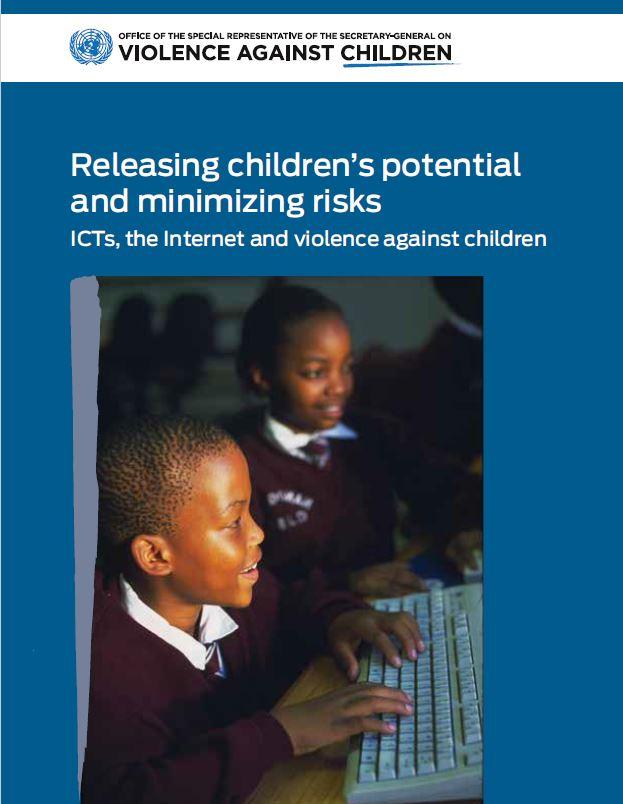 |
Releasing Children's Potential and Minimizing Risks - ICTs, the Internet and Violence against ChildrenInformation and communication technologies (ICTs) are developing ever more rapidly, with profound effects upon societies around the world. They bring with them enormous benefits and opportunities, most especially by facilitating access to the Internet. ICTs are creating new ways of communicating, learning, delivering services and doing business. For children and youth, who are often particularly adept at harnessing the potential of these technologies, ICTs and the Internet represent an important opportunity for empowerment and engagement, offering new means of experiencing creative processes, communication, social interaction, entertainment and learning. Children are not simply passive recipients of information; they are also engaged participants and actors in the online world. Download the publication |
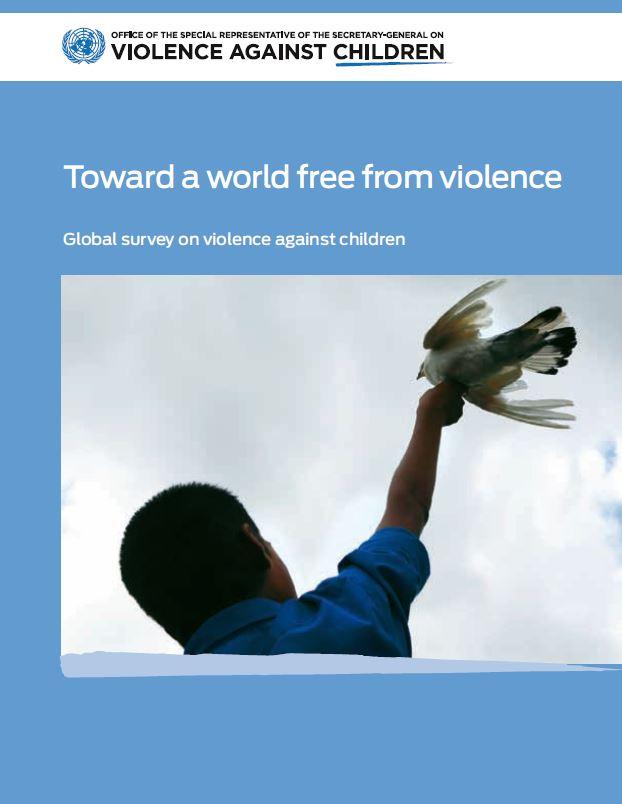 |
Toward a world free from violence - Global survey on violence against childrenAs underlined in this Global Survey, violence against girls and boys cuts across boundaries of age, race, culture, wealth and geography. It takes place in the home, on the streets, in schools, in the workplace, in detention centres and in institutions for the care of children. For countless girls and boys the world over, childhood is described by one word: fear.institutional response. The Report’s findings and recommendations point the way towards a future in which children are able to grow up well-nourished, in good health, well-educated, resilient and free from violence. We owe a childhood without fear to each and every one of our children. Download the global survey Spanish version |
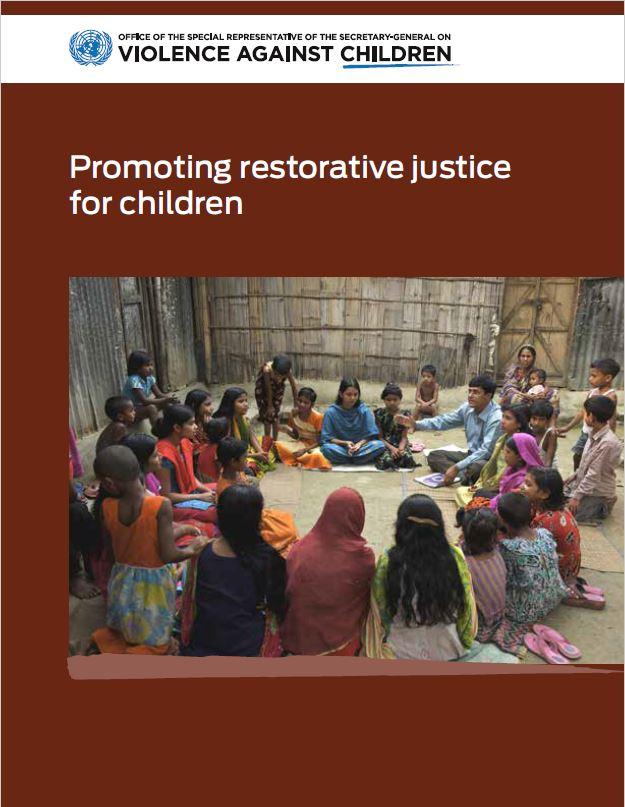 |
Promoting Restorative Justice for ChildrenToday, more than 1 million children are deprived of their liberty worldwide, and countless children face violent and degrading treatment throughout the criminal justice process. In light of this dramatic situation, it is imperative to promote strategies that provide an alternative to detention and custodial sentences for children. This report examines the potential of restorative justice programmes to facilitate conflict resolution and provide appropriate protection to children. This applies to the justice system, whether children are victims, offenders or witnesses, but it also applies in a range of other contexts, including at school, in residential care units, in social welfare settings and in the community. Download the publication Spanish version |
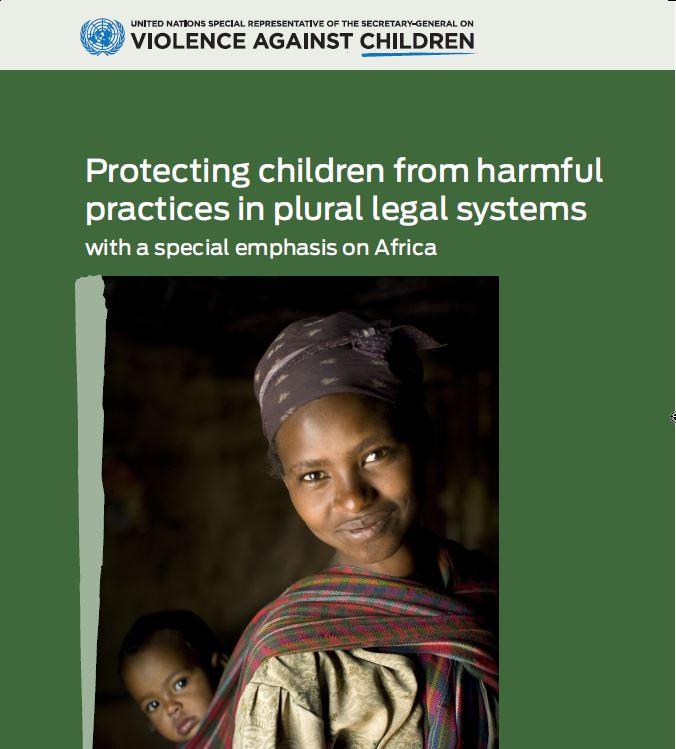 |
Protecting Children from Harmful Practices in Plural Legal Systems with a special emphasis in AfricaAcross regions, millions of children continue to suffer from various forms of harmful practices, including female genital mutilation, early and forced marriage, breast ironing, son preference, female infanticide, virginity testing, honour crimes, bonded labour, forced feeding and nutritional taboos, accusation of witchcraft, as well as a great number of other less known practices. Harmful practices may be traditional or emerging, but generally have some cultural, social or religious underpinning. Common for most harmful practices is that they have devastating consequences on the child’s life, development, health, education and protection. Download the publication Spanish version French version |
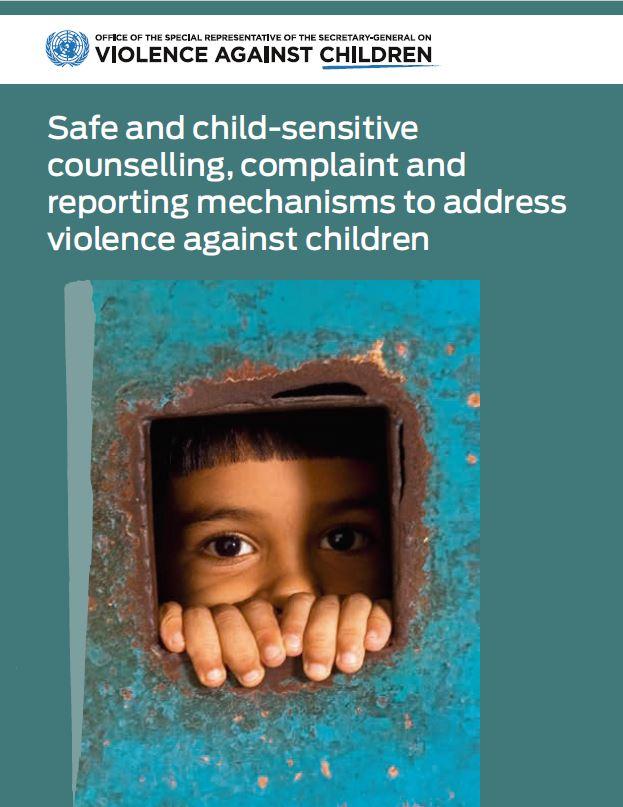 |
Safe and child-sensitive counselling, complaint and reporting mechanisms to address violence against childrenCounselling, complaint and reporting mechanisms constitute critical remedies to address breaches of children’s rights, including violence in all its forms. Their development is anchored in international human rights standards and, in view of their urgency, the Brazil Congress against the Sexual Exploitation of Children and Adolescents called on their establishment in all countries by 2013. The need for safe, well-publicized, confidential and accessible mechanisms for children to report incidents of violence was also a serious area of concern addressed by the UN Study on Violence against Children. The Study recommended their establishment, including through telephone helplines which children can access to report abuse, speak to a trained counsellor in confidence, and ask for support and advice. Download the publication |
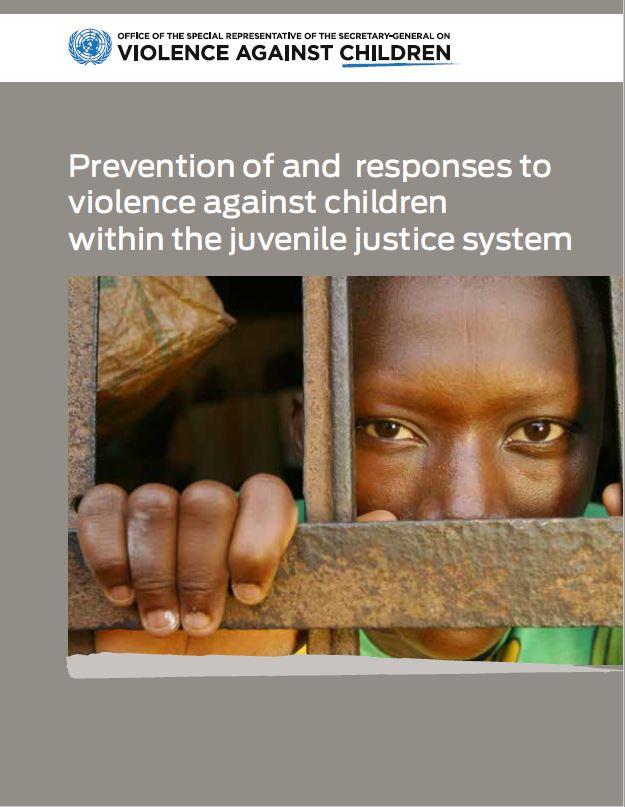 |
Prevention and Responses to Violence against Children within the Juvenile Justice SystemIn its resolution 18/12 of 24 September 2011 on human rights in the administration of justice, in particular juvenile justice, the Human Rights Council invited the Office of the High Commissioner for Human Rights, the United Nations Office on Drugs and Crime and the Special Representative of the Secretary-General on Violence against Children to collaborate in the organization of an expert consultation on prevention of and responses to violence against children within the juvenile justice system and to submit a report thereon. The Expert Consultation took place in Vienna on 23-24 January 2012. It was hosted by the United Nations Office on Drugs and Crime (UNODC) and co-organized with the Office of the High Commissioner for Human Rights (OHCHR) and the Special Representative of the Secretary-General on Violence against Children, in cooperation with the Government of Austria. Participants included representatives from international and regional human rights bodies, governmental and State institutions, academia and civil society. Donwload the publication |
 |
Tackling Violence in Schools: Bridging the Gap between Standards and PracticeFor child victims of violence, school can become an ordeal rather than an opportunity. The promise and potential of education and the excitement of discovery and learning are undermined by pain, trauma and fear. In some cases children’s academic performance suffers, their health and wellbeing is affected, and their capacity to operate as confident individuals, capable of developing open and trusting relations with others, is compromised. The negative impact of violence in schools goes beyond the children who are directly affected by it. It touches the lives of those who witness it, creating an atmosphere of anxiety and insecurity incompatible with learning. Recognizing the crucial importance of education in safeguarding children’s rights, and of violent-free schools as catalysts for non-violence in the communities that they serve, the Norwegian Government, the Council of Europe and my own office joined hands in the organization in June 2011, in Oslo, of an expert consultation on tackling violence in schools. Download the publication Spanish version |
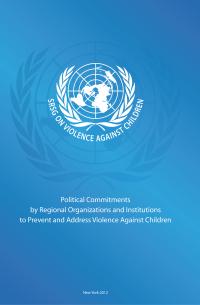 |
Political Commitments by Regional Organizations and Institutions to prevent and Address Violence against ChildrenThe collaboration with regional organizations and institutions to advance implementation of the recommendations of the UN Study on Violence against Children has been a critical dimension of this process. In the past two years, considerable progress has been achieved in this area with a growing institutionalization of regional governance structures and the development of regional initiatives. Leading regional organizations and institutions have pledged to protect children from violence, including the Organisation of Islamic Cooperation, the League of Arab States, the South Asia Initiative to End Violence against Children (SAIEVAC), States in the Asia Pacific Region, the ASEAN Commission on the Promotion and Protection of the Rights of Women and Children (ACWC), the MERCOSUR Permanent Commission Nin@sur, the Council of Europe, the European Union, the African Union and the African Committee of Experts on the Rights and Welfare of the Child. Download the publication |

